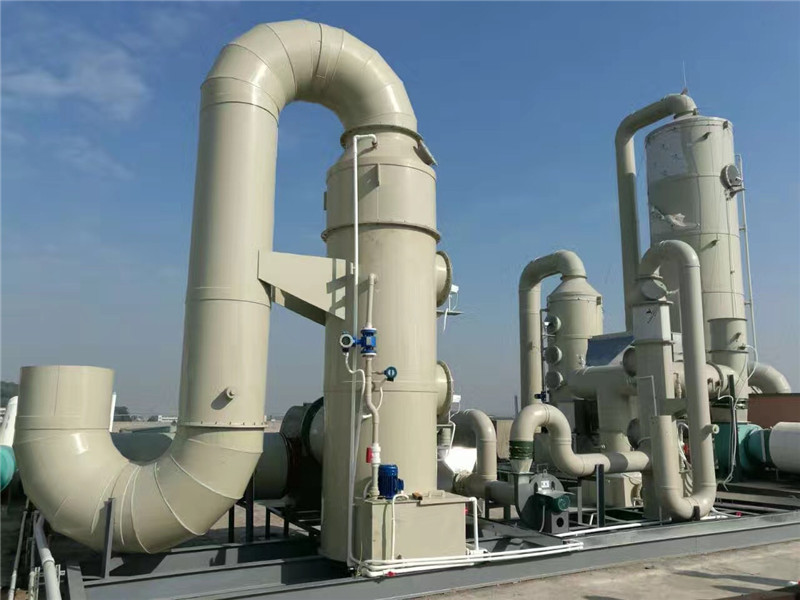- All
- Product Name
- Product Keyword
- Product Model
- Product Summary
- Product Description
- Multi Field Search
Views: 18 Author: XICHENG EP LTD Publish Time: 2021-08-07 Origin: XICHENG EP LTD
Organic waste gas treatment refers to the use of various technical measures to reduce oil loss, reduce the number of organic solvents or exhaust gas purification through different ways to eliminate organic waste gas pollution. Organic waste gas pollution sources are widely distributed. In order to prevent pollution, in addition to reducing oil loss and reducing the number of organic solvents to reduce the generation and emission of organic waste gas, exhaust gas purification is currently a practical and feasible way to control. Commonly used methods are the adsorption method, absorption method, catalytic combustion method, thermal combustion method and so on. When selecting a purification method, the county should select a method with low cost, low energy consumption, and no secondary pollution according to the specific situation, try to turn harm into profit, and fully recycle the components and waste heat. In most cases, the petrochemical industry uses methods such as condensation, absorption, and direct combustion due to the high exhaust gas concentration; the coating construction and printing industries use methods such as adsorption and catalytic combustion due to the low exhaust gas concentration.

The organic waste gas is directly introduced into the condenser through adsorption, absorption, de-boarding and separation, and valuable organic matter can be recovered. This method is suitable for the working conditions of high concentration of organic waste gas, low temperature and small air volume, and requires auxiliary refrigeration equipment, which is mainly used In the pharmaceutical and chemical industries, printing companies seldom use it.
Use gas or oil and other auxiliary fuels to burn to heat the mixed gas to decompose harmful substances into harmless substances under the action of high temperature. This method has a simple process and low investment and is suitable for high-concentration and low-volume exhaust gas. Operational requirements are high.
The exhaust gas is heated and catalytically burned into harmless and odorless carbon dioxide and water; this method has low ignition temperature, energy-saving, high purification rate, convenient operation, small area, large investment, and it is suitable for high temperature or high concentration. Organic waste gas.
Generally, physical absorption is used, that is, the exhaust gas is introduced into the absorption liquid for purification. After the absorption liquid is saturated, it is heated, analyzed, and condensed to recover; this method is suitable for large-scale, low-temperature, and low-concentration exhaust gas, but it needs to be equipped with heating analysis and recovery equipment. Large size and high investment.
Generally, the activated carbon adsorption method is adopted: the exhaust gas is adsorbed by activated carbon. When the adsorption is saturated, the activated carbon is desorbed and regenerated. The exhaust gas is blown off and catalytically burned to convert it into harmless substances. The regenerated activated carbon is continued to be used. When the activated carbon is regenerated a certain number of times, the adsorption capacity is significantly reduced, and the activated carbon needs to be regenerated or updated.
Activated carbon is currently the most used method to treat organic waste gas. It has good adsorption performance for benzene waste gas but has poor adsorption for hydrocarbon waste gas. The main disadvantage is that the operating cost is high and it is not suitable for an environment with high humidity. However, as far as the current market applications are concerned, the use of activated carbon adsorption is the most commonly used. The most used activated carbon are activated carbon particles and activated carbon fibers. The price of activated carbon particles is relatively cheap, but the effect is lower. In comparison, the price of activated carbon fibers is relatively higher and the effect is better.

Direct adsorption method: The organic waste gas is adsorbed by activated carbon to achieve a purification rate of more than 95%. The equipment is simple and the investment is small. However, the frequent replacement of activated carbon increases the working procedures of loading, unloading, transportation, and replacement, resulting in increased operating costs.
Adsorption-recovery method: the use of fiber-activated carbon to absorb organic waste gas, which is blown back with superheated steam after reaching saturation, for desorption and regeneration; this method requires the necessary amount of steam to be provided.
New adsorption-catalytic combustion method: This method combines the advantages of the adsorption method and the catalytic costation method adopts a new type of adsorption material (honeycomb activated carbon) for adsorption and introduces hot air for desorption, analysis, and desorption after approaching the drinking water. After the exhaust gas is introduced into the catalytic combustion bed for flameless combustion, it is thoroughly purified, and the hot gas is recycled in the system, which greatly reduces energy consumption. This method has the characteristics of stable and reliable operation, low investment, low operating cost, and convenient maintenance. It is suitable for the treatment of large air volume and low concentration exhaust gas. It is currently a relatively mature and practical method for organic exhaust gas treatment in China.

| | N0.34 Zhenxing Road (Shengtaian Heavy Industrial Park B), Loucun, Guangming New Dist, Shenzhen, Guangdong, China |
| | +86 18028775826 |
| | Leyte@china-xicheng.com |